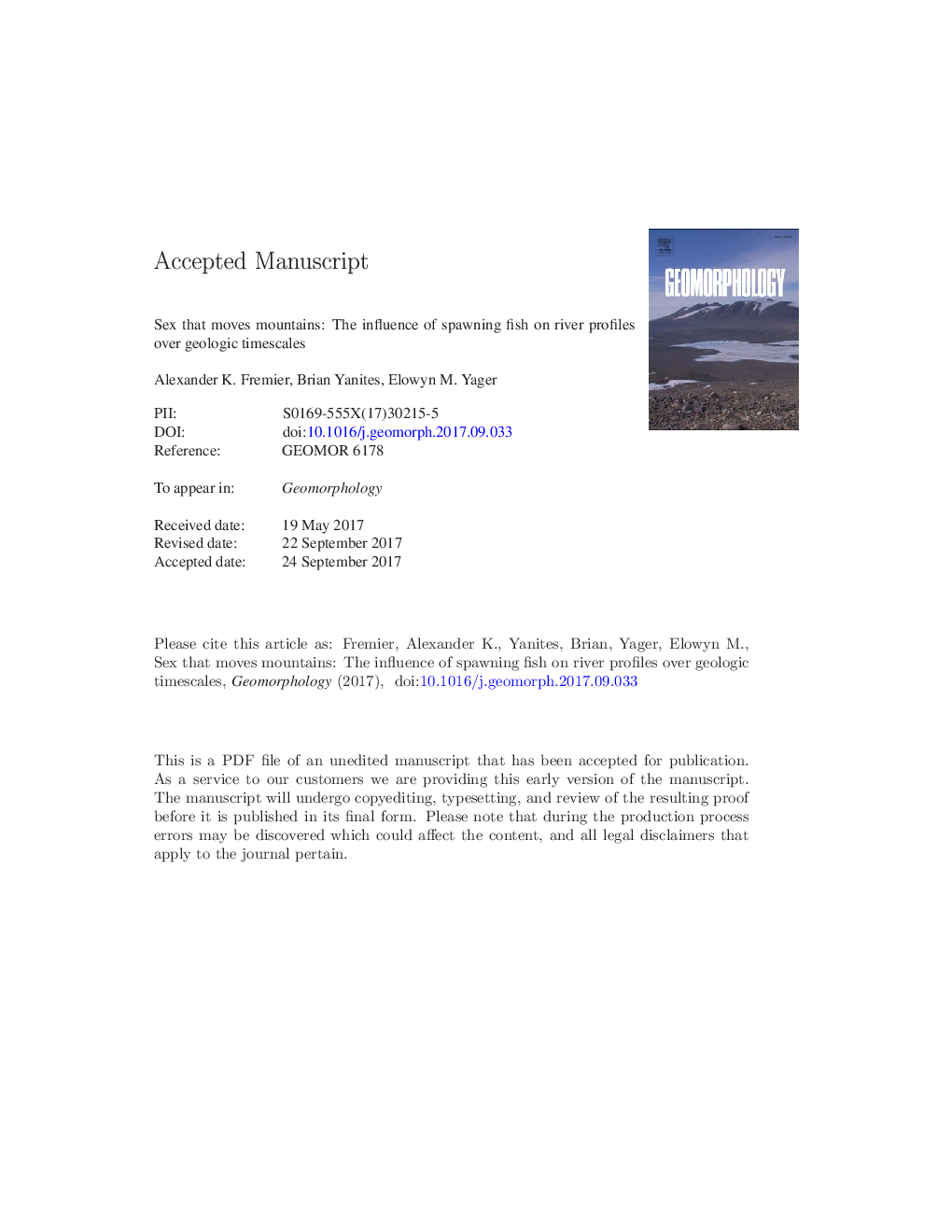| Article ID | Journal | Published Year | Pages | File Type |
|---|---|---|---|---|
| 8908165 | Geomorphology | 2018 | 44 Pages |
Abstract
A key component of resilience is to understand feedbacks among components of biophysical systems, such as physical drivers, ecological responses and the subsequent feedbacks onto physical process. While physically based explanations of biological speciation are common (e.g., mountains separating a species can lead to speciation), less common is the inverse process examined: can a speciation event have significant influence on physical processes and patterns in a landscape? When such processes are considered, such as with 'ecosystem engineers', many studies have focused on the short-term physical and biological effects rather than the long-term impacts. Here, we formalized the physical influence of salmon spawning on stream beds into a model of channel profile evolution by altering the critical shear stress required to move stream bed particles. We then asked if spawning and an adaptive radiation event (similar to the one that occurred in Pacific salmon species) could have an effect on channel erosion processes and stream profiles over geological timescales. We found that spawning can profoundly influence the longitudinal profiles of stream beds and thereby the evolution of entire watersheds. The radiation of five Pacific salmon from a common ancestor, additionally, could also cause significant geomorphic change by altering a wider section of the profile for a given distribution of grain sizes. This modeling study suggests that biological evolution can impact landscape evolution by increasing the sediment transport and erosion efficiency of mountain streams. Moreover, the physical effects of a species on its environment might be a complementary explanation for rapid radiation events in species through the creation of new habitat types. This example provides an illustrative case for thinking about the long- and short-term coupling of biotic and abiotic systems.
Related Topics
Physical Sciences and Engineering
Earth and Planetary Sciences
Earth-Surface Processes
Authors
Alexander K. Fremier, Brian J. Yanites, Elowyn M. Yager,
